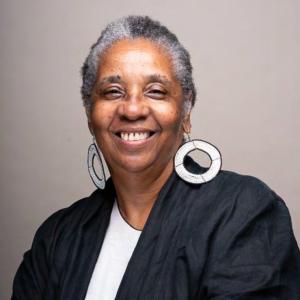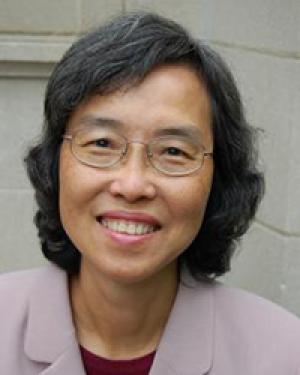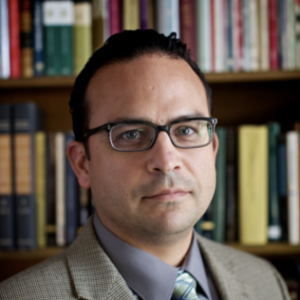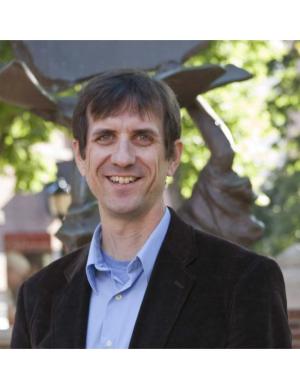Resources

Part Four: Ritual is a Form of Activism Engaging ritual as an individual or as a collective act of embodiment challenges ideas about the source and nature of our intelligence and for some it challenges ideas about how we arrive at knowing. As a form of activism, ritual invites us into the process of restorying that counters colonizing stories which perpetuate cultural and gender hegemony. Rituals also take the diverse traditions of old narratives and gives them meaning for the present context or need. The restorying in ritual also centers diverse intelligences (bodily-kinesthetic, environmental, rhythmic, visual, auditory, social, etc.,) in a nonhierarchical manner. It affords us to remember our own story in relationship to the transcendent, to remember a people’s story in relationship to the unseen yet felt power of spirit. Our ritual restorying is another form of both our personal and collective agency. Ritual focuses on lived and innate capacities that are in operation to benefit us and community. Imagine that – using our intelligence for our personal and collective benefit, not for institutions or capitalizing agendas. We get to use our restorying in ritual to practice “being” while welcoming others into the same practice. This is primarily the role of community participation in ritual; to show our authentic selves. Whether it is the restorying of a grief ritual, the restorying of a ritual for renewal and rebirth, a ritual of covenant or a ritual of invocation; the community’s role is to authentically show up. Here is where ritual begins to counter models of acceptability, belonging, worthiness posited by dominant forces or groups that exclude, marginalize, and perpetuate othering. If the intent is transformation and ethical change, ritual can construct a valid and mutually beneficial pathway for creating community strong enough to hold one another’s truths.

The day after the Atlanta spa shootings in March last year, my class on Asian and Asian American Theologies met via Zoom. We had scheduled to discuss worship and preaching for that class. But I knew that the murder of eight people, including six women of Asian descent, would weigh heavily on the students’ hearts. I sensed that this communal crisis would be an undercurrent in whatever we were going to discuss, and that students needed a space to process their thoughts and feelings. It turned out that several students lived close to one of the spas. One student passed by it almost every day. These students were particularly hard hit by the murders. [caption id="attachment_250943" align="alignright" width="476"] Students at Candler School of Theology held signs outside Gold Spa[/caption] The next day, two Asian and Asian American students in the class went to one of the spas to protest the shootings. One of them held a sign saying, “Stand with the Asian Community.” A New York Times journalist took a photo of them and wrote about their protest in the newspaper. Later that weekend, other students also visited the site to remember the victims and speak out against anti-Asian violence. Prompted by the students’ activism, I gathered the Asian and Asian American faculty of my school to find ways to respond to rising anti-Asian hatred in the country. We decided to organize a webinar and invited scholars and a local activist to address “Anti-Asian Racism and Christian Responses.” The response was beyond our expectations. More than 600 people of different racial backgrounds from across the US registered for the webinar and more than 430 people attended! During the webinar, some clergy and leaders of white churches asked for resources on the Asian American community and churches. I felt the need to educate the public about the long history of discrimination against the Asian American community and the people’s resilience. Living in the South, the discussion of racism usually follows a black and white binary, such that the oppression of Asian Americans, Latinx Americans, and Native Americans becomes invisible. Orientalized stereotypes portray Asian women as obedient, compliant, and hypersexualized. Popular media casts them as the long-suffering Madame Butterfly or the seductive Suzie Wong. During the Vietnam War, sex tourism flourished around American military bases in the Philippines and other Southeast Asian countries. Asian women’s bodies were exploited by American GIs for their “rest and recreation” during the brutal Vietnam war. Sex tourism created the myth that Asian women’s flesh is available and there for the taking. Robert Aaron Long, the white killer of the spa shootings, said that he has a “sex addiction” and that he thought the spas owned by Asians were “safer” than paying for sex elsewhere. A member of a Christian church, he has struggled with his addiction and lashed out at the spa businesses, which he viewed as sexual temptation. To provide opportunities to learn about Asian and Asian American women, I facilitated an online course on Asian and Asian American Feminist Theologies in the summer of 2021. I invited guest speakers from both Asia and the US to speak about feminist theology, interpretation of the Bible, Christian ethics and sexuality, interreligious learning, and leadership and ministry. The online short course attracted hundreds of participants from Asia and North America. It provided a forum for dialogue across geographical, racial, cultural, and religious differences. The pandemic forced us to shift our teaching online in the past years. While we lament the disruption and long for in-person contact, online teaching enables us to reach a wider audience. Millions are accustomed to using Zoom as a learning platform. My short course was truly transnational and the discussion was rich and riveting. The recordings of the course were uploaded to YouTube so that people can use them as resources. As scholars we have to begin thinking about the “community” we teach in a much broader sense. It is important to remember that Asian feminist theology emerged during the height of the Vietnam war. Some of the pioneering theologians, such as Mary John Mananzan from the Philippines, addressed the sexual exploitation of women, sex tourism, and militarism. Today, Asian and Asian American female scholars and activists continue to protest sexual abuses and harassment of Asian women by militarism, the police, and other powerful men. [caption id="attachment_250944" align="alignleft" width="425"] The altar created at the vigil service in the Cannon Chapel at Candler School of Theology[/caption] Close to the anniversary of the March spa shootings, I organized a vigil for the victims at my school’s chapel. During the vigil, we prayed for other victims of war and violence, especially those who died in the Russian invasion of Ukraine and their families. When the Korean hymn “O-So-So” was sung by a student, I invited the community gathered to place Japanese peace cranes on the altar to symbolize their prayers and solidarity. On the altar were two paintings by a local Korean American artist, Connie LaGoy, who painted them in response to the shootings. She has sold prints of the paintings to generate funds to donate to the victims’ families. When a community tragedy disrupts our classes and teaching agenda, it opens a window for rethinking our teaching and vocation as a scholar.

For Gloria Anzaldúa, the borderlands are rooted in US-Mexico geopolitics in which the border wall is both a socializing project and an everyday policing structure. Although Anzaldua’s activist hermeneutic of the borderlands has a state of transcendence in view, it remains politically grounded given that her experience with borderlands is inextricably tied to a US-inflicted social wound on the people and the landscape. Here, political activism functions as a spiritual exercise, which, for Anzaldúa, was achieved through the power of the pen. In essence, her recourse to writing as a political act stemmed from her understanding of the power that archives have in defining identities and shaping social realities. In this sense, the border wall functions as an archive of US imperialism, racism, and anti-immigrant sentiments. Through her writings, therefore, she aims to trespass on this archive, or more specifically cross the border wall by offering a counter-reading of the history, culture, and beauty of ethnic Mexicans. The notion of border wall as both politics and an archive speaks to how borders and walls in general are the result of a cultural value system and shared social beliefs about the Other. The southern border walls separating the US from Mexico are a reality based on the widespread belief that ethnic Mexicans are entirely inferior and hence more prone to criminality. The genealogy of such myths can be traced to the mid-nineteenth century and the expansionist ideology of Anglo-American Manifest Destiny. This ideology relied heavily on a theology of providence, which, in turn, made the Anglo Protestant Church its most ideal ambassador. Thus, any trespassing on the archives that legitimate the current southern border wall must be attentive to the North American Church and its scientific and literal uses of scripture. For those churches acting more as agents of the state, crossing the border wall is considered not just a crime against the state but even more a sin against God. This conflation of state agenda and divine will is also operative in chaplaincy services provided in US immigration detention facilities, to the extent that convicted border crossers are led to accept detention and deportation as part of their Christian duty. In the US-Mexico borderlands, border-crossing points to a transgressive act; yet for an activist hermeneutic of the borderlands, this act of transgression can be harnessed in a methodological way, especially as it pertains to the interpretation of scripture and its interpreters. Just as Anzaldúas’ notion of borderlands helps us to reframe the hermeneutical enterprise as an awareness of and interchange with otherness, taking up border-crossing as a decolonizing reading strategy cannot avoid the US-Mexico border writings of Américo Paredes. Because Paredes’s border-crossing strategy operates primarily as a response to US expansion over Mexico’s northern territory, it is attuned to not only “border wall as archive” but also to “border wall as a colonizing discourse.” When applied to an activist hermeneutic of the borderlands, border-crossing as a strategy for reading scripture implies a transdisciplinary engagement with the biblical text and its interpreters. Although crossing and converging multiple-theoretical discourses is essential, the lives of everyday people in the borderlands attunes our social justice gaze toward the material and spiritual suffering of people rather than ideas alone. As Paredes reveals in his discursive border-crossings, the lived experiences of border people often fall out of view in the professional theoretical literature and hence in the classroom. The cultural values and rules of self-making that govern disciplinary boundaries tend to dismiss the cultural productions of the colonized Other, arguing that they lack critical-thinking skills, leadership instincts, and refined aesthetics. Crossing over the borders that regulate the dominant hermeneutical enterprise with the cultural archive of those wounded by US border walls is not only a transgressive move but more importantly a liberating strategy for minoritized communities of faith. Their lived experiences with empire, violence, and forced migration serve as a vital commentary to biblical texts that bear witness to some of the same wounds. Here the lived commentary of border people and the human traces in the biblical text interact in kinship ways, from common themes to the postcolonial traumatic condition. By transgressing the boundaries of the dominant hermeneutical enterprise in this way, readers expose the synthetic nature of various Western scientific methods and their inability to deliver on their positivistic promises. Also, the lived commentary of border people emerges with increased value within the professional literature, which, in turn, may lead to their revaluation in the social justice realm.

Twenty-five springs ago I sat in a class on African American literature. On a small, rural midwestern campus, this course was taught by a white professor. Two of the seven Black students on campus at that time were in the class, the remaining twenty-five or so students reflected the demographics of our predominantly white institution. One Monday we filed into class and learned that a fight had taken place over the weekend. The details were still emerging, but one of the seats in our classroom was empty. The one detail that had been confirmed: racist slurs were a precipitating factor for the physical violence. In this moment, the professor faced a choice: to continue apace with our scheduled reading of Beloved, A Gathering of Old Men, and other, now canonical works, hewing close to the text; or, to break the fourth wall and talk about what happened, call us to the uncomfortable acknowledgment that we could not confine our discussions of race to the characters in books that could be sold back to the bookstore when the course ended. Like most students, I suspect, I was largely unaware of all that went into that deceptively simple choice. This past week, as I prepared for a class discussion on Ibram X. Kendi’s How to Be an Anti-Racist and Fania Davis’s synthesis of racial justice and restorative justice, my class and all other classes were canceled by our administrators in a show of support for a student organized walk-out. The walk-out was a response to a blatant act of racist hate speech that targeted one student. Hundreds gathered on our main courtyard to listen to their peers speak their truths about being a person of color on our campus. For many students at our predominantly white institution this was, as they later acknowledged in class, the first time they had heard unfiltered, unmediated stories about the lived experience of blackness from people they actually knew (or thought they knew?). The night before the walk-out, I thought about my own professor’s choice twenty-five years ago. I had no doubt we would center the incident and the campus response in the coming weeks in our class discussions. And I have no doubt that my immediate clarity on this choice owes a debt to the professor who chose discomfort over distance, modeling the way in which good teaching demands recognition of the explicit and implicit ways the world consistently breaks into our classrooms. With so much political hand-wringing about conflating activism and academics and looking over the shoulder as some iterations of “cancel culture” paralyze our classroom discussions, tempting us towards pedagogical paths of least resistance and convenient half-truths, I am left to wonder if our classrooms can still serve as activating spaces, as spaces where the world doesn’t just break in, but where we prepare students to break out into the world. I want to believe that this is possible, realizable, and not just part of the trite, pedagogically elusive language of university mission statements and branding slogans. But I confess that one-on-one conversations with students after class this week—in a course intentionally focused on racial equity—have tempered my optimism about the classroom as an activating space. Or, perhaps it has once again reminded me of the perennial, now hyper-polarized and politicized, challenge of teaching: what activates one student often deactivates another. With its now ubiquitous undercurrent of subtweets and their offline consequences, is the classroom the right place for these conversations? For the moment—no, for the movement—my answer has to be yes. The impossible possibility of conversations about race in the classroom remains for me a pedagogical, even if paradoxical, imperative. Like Reinhold Niebuhr’s impossible possibility of the love ideal, conversations about race in the classroom confront us with what we know to be true and right in our assertions of basic human dignity, even as these conversations remind us of how often we fail to fully actualize the ideal by which we are guided. In recognition of that gap and our moral obligations as teachers to stand in it, I share, with no small amount of trepidation, the email I sent to my class the night before the walk-out, my own attempt at reclaiming the classroom as an activating space not in spite of, but in the midst of its impossibility. Message to Living in a Diverse World Class, March 2021 Hello Students, I had planned to address the hate incidents in our class discussion tomorrow. The tragic irony is not lost on me that our focus in this week’s reading is the intersection of racial justice and restorative justice as outlined in the chapter by Fania Davis. In the days and weeks ahead, I ask that you consider what is your role to play in supporting students directly and indirectly impacted by this incident as well as in addressing the elements of our campus culture that give rise to these types of incidents. The framework of restorative justice centers the needs of the victims even as it makes clear that harms caused by acts of hate and violence extend out into the community and, therefore, require both individual and community responses. We are all trying to sort out how it is that we have come to this moment in history when hate speech is too often conflated with freedom of expression. And, tragically, we are bearing witness on our campus and in our wider culture to the normalization of violence this conflation inevitably leads to. In this moment, I want to challenge us to move back into the uncomfortable space of talking directly about racism and anti-racism as they manifest offline in our very midst; it is, for me, one necessary way we must hold ourselves accountable. This is not about reducing these incidents to a “teachable moment.” This is about the distance we too often try to maintain between the classroom and the world. And how these incidents reveal this distance for the illusion that it is. The “world” breaks into our classroom, regularly. Our denial of this fact is, itself, a form of white, heteronormative privilege. In these moments, I think it is also imperative that we ask: can the classroom also break into the world? Can what we do together in class the remainder of this semester be responsive to, and a form of taking responsibility for, the injustices that shape individual students’ lives on our campus in radically disparate ways? At a minimum, I think we owe this to one another in our class, but more importantly, we owe this to those targeted by the hate and violence. In closing, I offer I drafted in response to national racial and religious hate incidents over the past couple of years, words I had hoped (perhaps naively) would never be needed as a response to incidents on our campus: Let us stand together committed to forming our lives in this community, daily, through practices of hospitality and not hate, in acts of compassion and not callousness, and as witnesses to the promise of peace and not the pathology of violence. While our various religious and spiritual traditions call us to imagine a world when this daily work is no longer necessary, they are not naïve to the world as it is. As wisdom from the Jewish tradition reminds us: “It is not your responsibility to finish the work, but neither are you free to refrain from it.”